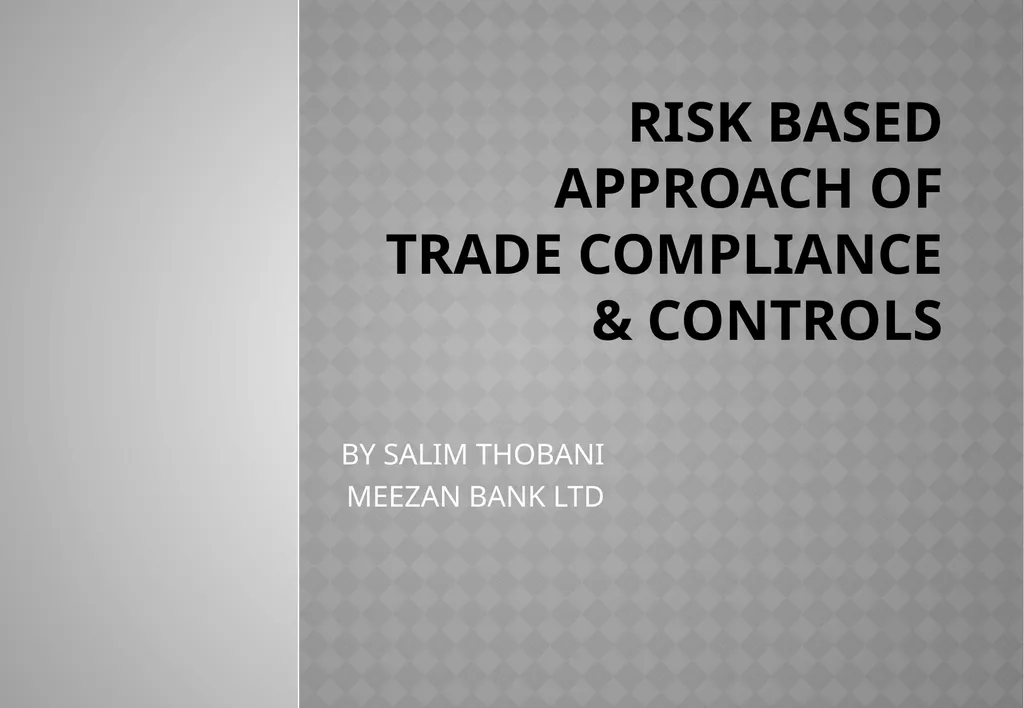
RISK BASED APPROACH OF TRADE COMPLIANCE & CONTROLS
Author: min-jolicoeur | Published: 2025-07-18
Description: RISK BASED APPROACH OF TRADE COMPLIANCE CONTROLS BY SALIM THOBANI MEEZAN BANK LTD Workshop Flow Introduction and Objectives Of the Workshop Process Of Anti Money Laundering Practical Implementation of AML-Trade in Trade Products AML
Download Presentation
Download the PPT/PDF: Download
Transcript:
Loading transcript…